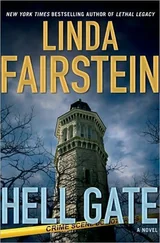“People live there all year?”
“Yeah, probably not more than fifteen thousand permanent residents. Then the population swells to close to eighty thousand when the ” summer people“ and vacationers swarm on.”
I explained to Mike that it was settled by the English in 1642 and governed by the Duke of York, hence the fact that it is located in Dukes County. It was actually a part of the state of New York for its first half-century like Kings, Queens, and Dutchess counties then annexed to Massachusetts, which is only seven miles across the Vineyard Sound.
“How can each of the towns be so different, all on the same island?”
“Two ways, actually,” I answered.
“One is simply the variety of the land. There are great harbors that launched the whaling industry in America centuries ago, thousands of acres of protected forest in the middle of the island, rolling hills that supported sheep farming and an agricultural base further west, and miles of the most glorious beaches you’d ever want to see that stretch from one tip of the island to the other.
“And the other is the way each of the towns has grown up around one way of life or another, as a result of the varied geography. Start with Edgartown at the eastern end of the Vineyard. It’s a classic New England village with rows of elegant white houses and churches and shops, quite formal in the Federal style, trimmed with fences and fabulous gardens which spill onto the brick sidewalks in summer.
The large old homes are the legacy of the whaling captains who built them in the early nineteenth century, when the island was the center of that industry.“
I went on to describe each of the others. Oak Bluffs has an entirely different architecture and feel. Huge Victorian houses line the seaside area, adjacent to the Camp Meeting Grounds property which grew up around the enormous wrought-iron Tabernacle built by an evangelical association of followers of John Wesley in the late 1800s. In winter, Oak Bluffs is home to a lot of the workmen who are permanent islanders, while in summer its main street comes alive with almost a honky-tonk resort feel. It’s also got a summer population of black professionals from all over the Northeast New York, Cambridge, Chicago, Washington women and men who have vacationed on the Vineyard for generations.
Then there’s Vineyard Haven, the commercial center of the island and site of the main ferry terminal, which combine to make it the center of day-to-day island activities year round, and home to almost one third of the island residents. Once you move away from those three towns, you get to the spectacular scenery of the middle and western parts of the Vineyard, where the open spaces are guarded zealously against development. West Tisbury has always been the agricultural capital, with a geographic range that includes working farms, acres of state forest, a wildlife sanctuary, and stunning homesites on rocky perches that look over Vineyard Sound to the Elizabeth Islands. There’s not much more in the way of commerce than a general store and some farm stands, a far cry from the three bustling ‘down-island’ towns.
“Then we come to paradise,” I went on.
“Chilmark.” The place on earth where I was most at peace, the place that I thought had more physical beauty than any place in the world I had ever visited. Its rolling hills and countryside are very evocative of the English countryside. The landscape is dotted with gray-shingled farmhouses, simple and functional in their beauty; and rambling throughout the houses and fields of sheep and horses are miles of ancient stone walls, built by the early settlers and farmers to mark the boundaries of their property. I like those walls best in winter and early spring when you can see the amazing combinations of rocks that have been fitted together to form their spines, before the wild roses and bittersweet of summer climb out and over to dress them in green and pink and scarlet.
And most of all what I love about Chilmark is that wherever you are in the midst of this glorious countryside, you are never very far from the sight and the sound of the water.
Miles of perfectly white sand beaches on the south shore, rocky beaches both south and north, enormous ponds with clams and oysters you can dig out and take home for dinner, and ever-changing vistas of ocean currents from hilltops at every turn, of waves that could carry you anywhere you wanted to go in a real or imaginary world.
Last town beyond that is Gay Head, the westernmost tip of the island. Much smaller in territory than Chilmark, it is also flatter and rimmed with dunes around its shorelines.
But it builds to a spectacular sight at its furthest point: dramatic cliffs of multicolored clay which plunge to the sea at the junction of the Vineyard Sound and the Atlantic Ocean.
By the time we began our descent into the Boston area, Mike was up-to-speed on the island history and description, most intrigued by the fact that only two of the towns Edgartown and Oak Bluffs were wet, and that you couldn’t buy liquor in any of the stores or restaurants up-island.
“Sounds fuckin‘ weird to me can’t even have a beer with lunch.”
“Don’t worry, there’s a full supply at the house. You’ll make it.”
From the shuttle terminal we walked across the drop-off area to a small counter at the end of a row of commuter airline desks, none of which looked as if it had been in business for more than a week and each of which served two or three places you’d never heard of in New Hampshire and Maine.
“Good morning,” I said to the girl she looked about eighteen who was standing below the Cape Air logo.
“We’ve got reservations on the nine forty-five to the Vineyard. Names are Cooper and Chapman.” I handed her my credit card and she pulled up the computer list for the flight.
“Okay. Got ‘em Alexandra and Michael, right? What are your weights, please?”
“Excuse me?” Michael asked.
“I’m one twenty-two and he’s… what are you these days? And please tell the truth, Mike, my life may depend on it.”
“What do you need my weight for?”
“Like it’s a Cessna 402. We’ve got a weight limit, so we have to know like what the passengers weigh, and the baggage, so we can like distribute it and stuff.”
“What are we flying in, Coop, a rowboat? I can’t do this.”
“You’ll be fine. It’s only half an hour you’ll be up and down before you have time to think about it.”
“Two-ten,” he murmured, clearly miserable as he looked out the window and noticed the tiny nine-seater parked near the exit door.
Picking up on his discomfort, the counter girl chimed in, “Like you can sit up front next to me, in the copilot’s seat. I brought her in from Nantucket an hour ago and it’s a perfect day for flying. There’s no fog and like very little wind it’s really awesome.”
The kid was playing with Mike and he didn’t get it yet.
I watched the exchange, and could see she was attracted to him, which got me to thinking about him in a way I hadn’t done for years: as a guy, and not just a working partner.
Today, even at moments like this when his wonderful smile wasn’t working for him, he was handsome and lean, and a standout in most crowds. Dressed in his navy blazer, striped shirt with white collar and cuffs, jeans and loafers, he looked like any other yuppie headed for a fall weekend at a country inn.
“Thanks, but the pilot might get jealous,” Mike responded to her.
“I know you’re a very good investigator, Chapman,” I said as I nudged him with my elbow, ‘but she is the pilot.“
“What? You gotta be kidding me. She’s an infant, she’s gotta be in junior high school, she’s…”
“Trust me. She’s ”like“ the pilot, Mike.”
Читать дальше












